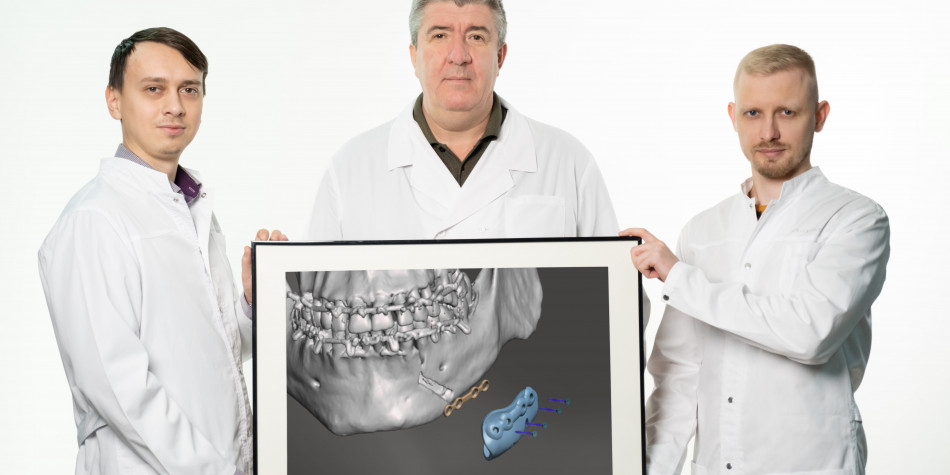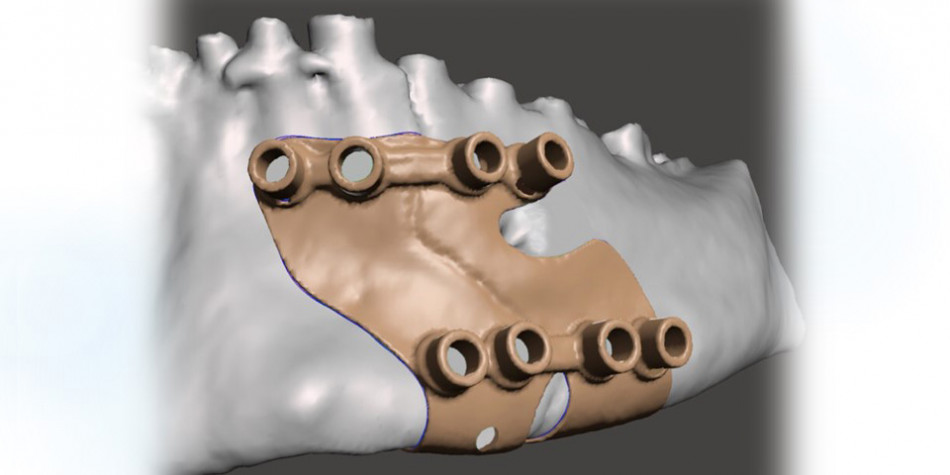
Young scientists of KemSMU (participant of the REC "Kuzbass") we have received a patent for a utility model in the field of maxillofacial surgery and surgical dentistry
Postgraduate students of the Department of Surgical Dentistry and Maxillofacial Surgery of Kemerovo State Medical University, Zhan Gorodkov and Pavel Golavsky, under the guidance of Doctor of Medical Sciences, Professor Alexander Pylkov, together with doctors of the Regional Hospital. Belyaev improved surgical treatment of fractures of the lower jaw.
The innovation consists in the use of an individual surgical template made on a 3D printer made of biocompatible plastic. This template allows you to reposition the fragments of the lower jaw as accurately as possible and restore its anatomical integrity during bone osteosynthesis with titanium mini-plates without the risk of damage to the neurovascular bundle and the roots of the teeth with intraosseous fixators.
- The invention consists in virtual preoperative planning of the location of the titanium mini-plates, taking into account the anatomical features of the patient, - says graduate student and surgeon Jean Gorodkov. Thus, damage to the mandibular nerve, dental roots and periodontal tissues during surgery with fixing screws is minimal. The production of an individual surgical template on a 3D printer makes it possible to achieve an ideal standing of bone fragments, reduces the time of surgery, the time of rehabilitation of patients and the risks of intra- and postoperative complications– such as persistent neuropathies and purulent-inflammatory processes.
The use of the proposed individual templates makes it possible to optimize surgical manipulations in the treatment of traumatic injuries of facial bones.
The utility model will find application in hospitals of maxillofacial surgery, where emergency and planned care is provided to patients with fractures of the bones of the facial skeleton. To date, the proposed technique has been tested in the Department of Maxillofacial surgery and Reconstructive Plastic Surgery in the Kuzbass Regional Clinical Hospital named after S.V. Belyaev, which is the clinical base of the Department of Surgical Dentistry and Maxillofacial Surgery of KemSMU.
A patent was obtained for the proposed utility model, the authors of which are J.E. Gorodkov, P.I. Golavsky, S.A. Batishchev and A.I. Pylkov. The principles of this method were included in the research plan of Kemerovo State Medical University.




